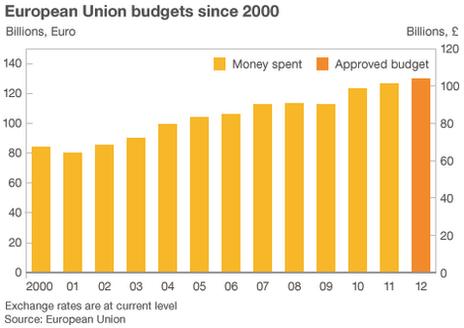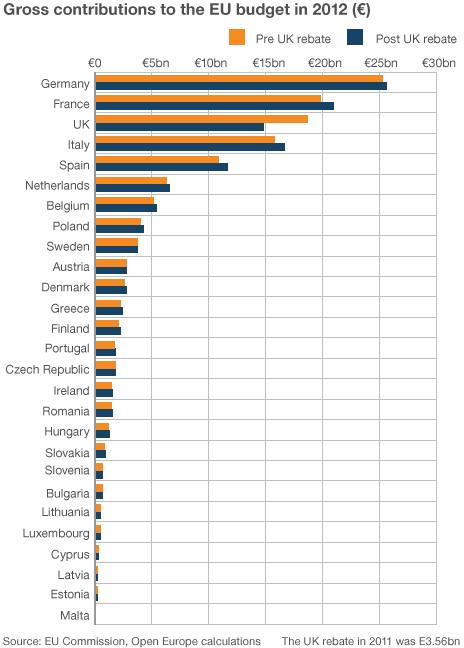EU budget for 2013
- Published
The 2013 EU budget is 132.8bn euros (£108bn; $176bn). It is a 2.4% increase on the 2012 budget.
The figure was reached in mid-December after much wrangling between the European Parliament, member states' governments and EU Commission. The Commission says , externalit is 5bn euros below the draft budget, so there is still a risk of a funding shortfall.
Over the past decade, the EU budget has risen considerably, as the graph below shows. Twelve countries have joined the EU since 2000, bringing the total to 27.
Bear in mind that the EU usually spends less than its budget allows, so that the final spending figure for 2013 may be less than the approved budget.
The EU budget represents about 1% of the member states' total GDP.

In 2012, five countries - Germany, France, Italy, the UK, and Spain - contributed nearly half of the EU budget.
Each country's payment is divided into three parts: a fixed percentage of gross national income (GNI), customs duties collected on behalf of the EU (known as "traditional own resources") and a percentage of VAT (sales tax) income.
There is one other important part of the revenue calculations: the UK rebate, which returns to the UK about half of its net contribution to the budget. The system was set up because in the 1980s relatively more of the UK contribution went into EU agricultural support, which mainly benefited farmers in France and other Mediterranean countries.
This rebate is paid for by the other 26 countries as a fixed amount of their gross national income. In 2011 the rebate was 3.56bn euros.

- Published5 February 2013
- Published4 February 2013